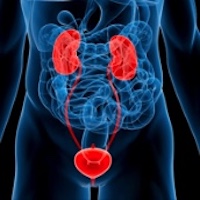Nephroureterostomy as a treatment of obstructive uropathy: A single center experience

Accepted: May 22, 2020
All claims expressed in this article are solely those of the authors and do not necessarily represent those of their affiliated organizations, or those of the publisher, the editors and the reviewers. Any product that may be evaluated in this article or claim that may be made by its manufacturer is not guaranteed or endorsed by the publisher.
Authors
Objective: To report the outcomes of percutaneous nephroureterostomies performed in a single center a period of ten years.
Materials and methods: We retrospectively collected and analyzed data for 52 nephroureterostomy procedures that were performed from September 2008 to August 2018. We present patient’s demographics, indications for the procedure, type of anesthesia, technical difficulties, length of stay in hospital and complications.
Results: A total of 52 procedures including 13 bilateral nephroureterostomies were performed on 39 patients. Taking into account the need for replacement of nephroureterostomy procedures during the study period, total number of procedures was 168. Out of a total 39 patients, 32 (84%) of patients had advanced cancer. All procedures were performed as day cases using sedation and had no immediate or early complications. Ten patients or 16% (27 nephroureterostomies out of total 168 procedures) had minor complications.
Conclusions: To the best of author’s knowledge, this is the largest case series reporting the outcome of percutaneous nephroureterostomies. We can therefore conclude that percutaneous nephroureterostomy is a useful palliative procedure to relieve ureteric obstruction, when other measures are not possible, and it has low incidence of complications. However, further studies are warranted to compare different procedures used to relieve ureteric obstruction.
How to Cite
PAGEPress has chosen to apply the Creative Commons Attribution NonCommercial 4.0 International License (CC BY-NC 4.0) to all manuscripts to be published.

 https://doi.org/10.4081/aiua.2020.3.248
https://doi.org/10.4081/aiua.2020.3.248



